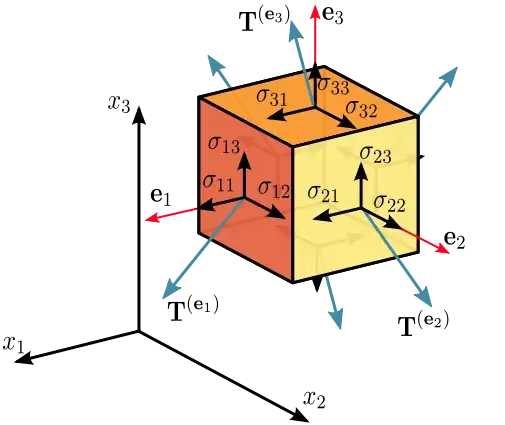I have a couple of questions related to the diagram in the answer by Kyle Kanos to this question, Why is stress a tensor quantity?.
Q1. If the box shown is of finite size why are there not three force components on each of the six faces?
Q2. What happens to the stress tensor when the box shrinks to a point?
Response to Answer by Kyle Kanos
Thanks for the answer but I think I need to clarify Q1 because the answer does not seem to be an answer to the question I intended. Each of the six faces of a finite size box will in general have a different net force acting on it and each net force can be resolved into three orthogonal components. Therefore why doesn't the stress tensor have (6 faces) x (3 orthogonal components) = 18 components?
